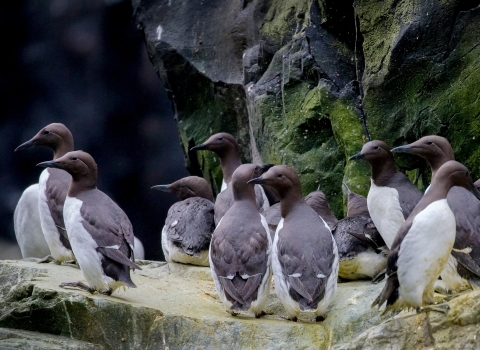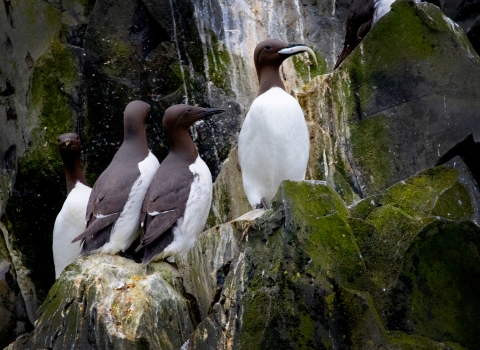The U.S. Fish and Wildlife Service is working on an environmental impact statement (EIS) for potential alternative actions (ranging from no action to various methods of eradication) to address nonnative invasive rats on four Aleutian Islands (Great Sitkin, Amchitka, Kiska, and Attu) within Alaska Maritime National Wildlife Refuge. The scoping period ended on November 7, 2024. For more information about the proposed project, visit: Rat Eradication on Four Aleutian Islands EIS
Location and Contact Information
- Alaska Maritime National Wildlife Refuge Visitor Center and HeadquartersView DetailsAlaska Maritime National Wildlife Refuge 95 Sterling Highway, Suite 1 Homer, AK 99603-7472
- Aleutian Islands WWII National MonumentView DetailsAK
- Adak OfficeView DetailsAlaska Maritime NWR/Aleutian Islands Unit 146B Finger Bay Rd Adak, AK 99546
About Us
Much of the refuge has been protected as a national wildlife refuge national wildlife refuge
A national wildlife refuge is typically a contiguous area of land and water managed by the U.S. Fish and Wildlife Service for the conservation and, where appropriate, restoration of fish, wildlife and plant resources and their habitats for the benefit of present and future generations of Americans.
Learn more about national wildlife refuge for over a century, and we recognize that refuge lands are the ancestral homelands of Alaska Native people. Development of sophisticated tools and the abundance of coastal and marine wildlife have made it possible for people to thrive here for thousands of years. Alaska Maritime National Wildlife Refuge stretches across the traditional homelands of the Unangax̂/Aleut in the Aleutian and Pribilof Islands, as well as smaller parcels on the homelands of Alutiiq/Sugpiak, Yup’ik/Cup’ik, Iñupiat, Dena'ina, Tlingit, Haida, and Eyak peoples.
Most of the refuge is federally designated Wilderness.
What We Do
We conserve, protect, and restore the diverse lands, waters, wildlife, and cultural resources of the refuge through excellence in education, outreach, and a program of scientific research on marine resources. Our vision is a viable, abundant, and resilient community of marine life which scientists, indigenous communities, and the public are actively engaged in conservation.
Our Organization
Our Species
Birds
The islands and coastal lands of the Alaska Maritime Refuge are bird magnets for seabirds whose only other home is the ocean; for birds migrating along Asian routes and needing to rest and eat; for birds that evolved on these remote islands and breed nowhere else.
Fish
The abundance of seabirds and marine mammals that breed and raise their young on the lands of the Alaska Maritime Refuge is due to the banquet of marine foods in surrounding waters.
Mammals
On the mainland areas of the refuge, the native mammals are similar to those of nearby areas. On islands, however, native land mammals are either absent or sometimes unique because they have been isolated in their development since the Ice Age. Marine mammals use these coastal lands to breed, raise their young, and rest.
Plants
From the windswept and treeless Aleutian and Pribilof Islands to the lush forests of southeast Alaska, remote island habitats are home to unique plant species, including the endangered Aleutian Shield Fern.
Get Involved
So much of our work depends on volunteers, Friends, and partnerships.
Projects and Research
We study marine birds, watching for changes in the marine environment that signal conservation problems. Our monitoring program provides long-term, time-series data. When the data reveal biologically-significant changes, scientists can test hypotheses about the causes of those changes. This long-term monitoring program is an integral part of the management of the Alaska Maritime Refuge. The information it provides is used to define "normal" variability in demographic parameters and identify patterns that fall outside norms, thereby signaling conservation issues. The Research Vessel Tiĝlax̂is key to accomplishing our mission.





























